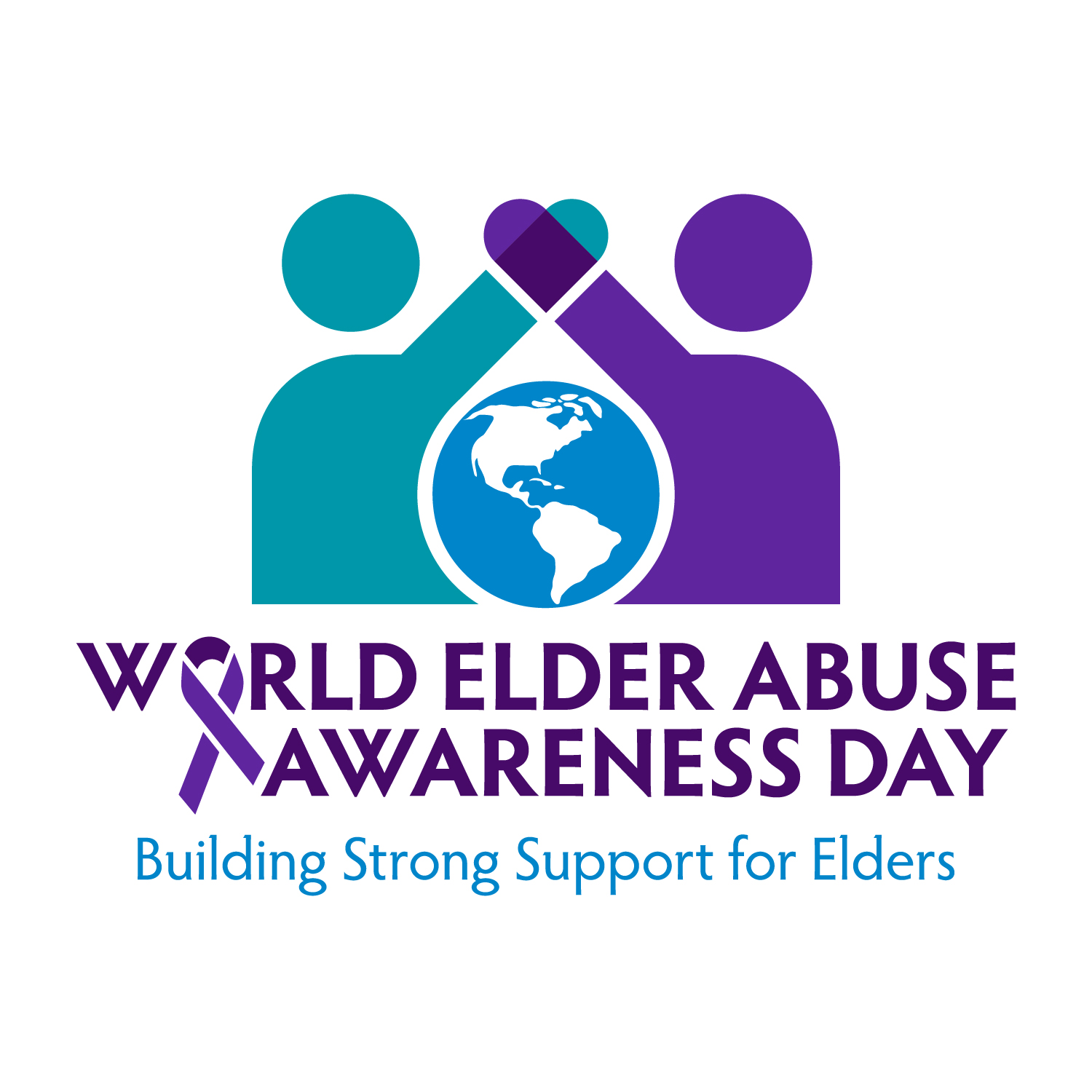
Today is recognized internationally as World Elder Abuse Awareness Day, and is an opportunity to highlight the vulnerability to sexual violence and other forms of abuse that so many elderly persons experience. Below is a statement from the National Center on Elder Abuse that communicates the importance of this day, and after that is a brief list of links to resources on Elder Abuse from the NSVRC and the Department of Justice.
From the National Center on Elder Abuse via the USC Center on Elder Mistreatment
As Americans, we believe in justice for all. Yet we fail to live up to this promise when we allow older members of our society to be abused or neglected. Older people are vital, contributing members of American society and their maltreatment diminishes all of us. Just as we have confronted and addressed the social issues of child abuse and domestic violence, so too can we find solutions to address issues like elder abuse, which also threatens the well-being of our community.
Friday, June 15, 2018 is World Elder Abuse Awareness Day. On that day, communities in the USA and all over the world will sponsor events to highlight solutions to this systemic social challenge.
Our policies and practices make it hard for older people to stay involved with and connected to our communities as they age. As a result, older people are more likely to experience social isolation, which increases the likelihood of abuse and neglect. We can design stronger societal supports to keep our older people connected and protect them from abuse, whether financial, emotional, physical or sexual. When we address a root cause, like social isolation, we also make it less likely that people will neglect themselves (self-neglect). Older adults who are socially connected and protected from harm are less likely to be hospitalized, less likely to go into nursing homes and less likely to die. We can and must create healthier and safer living environments for older adults, including their homes, nursing homes, and assisted living facilities.
There are many ways to get involved in strengthening our communities and preventing elder abuse:
- It is up to everyone to prevent and address elder abuse. Talk about it – to your leaders, and to your neighbors.
- Advocate for elder abuse prevention and intervention programs.
- Raise public awareness by conducting presentations and distributing materials about elder abuse at senior centers, places of worship, physician offices, etc.
- Educate yourself and enable others to better recognize the warning signs
- Lend strength to existing social support structures
- Be a friendly visitor to an older person living in the community
- Provide support for someone who is a caregiver
- Don’t tolerate ageism – this begins with not making fun of older adults
- Contribute to building new social support structures:
- Report concerns to your local Adult Protective Services program or law enforcement
- Get involved with the Long-Term Care Ombudsman program in your state, working to resolve problems related to the health, safety, welfare and rights of persons who live in long-term care facilities (e.g., nursing homes, assisted living).
Get more information about how to make a difference by visiting the National Center on Elder Abuse https://ncea.acl.gov or by calling the Eldercare Locator at 1-800-677-1116.
ELDER ABUSE RESOURCES
Building community collaborations to serve victims of sexual violence in later life by the NSVRC (2014)
- Part 1: Why collaboration? Karla Vierthaler discusses what she learned while developing a curriculum to cross-train elder protective service workers and rape crisis advocates in Pennsylvania around SVLL.
- Part 2: Starting a task force Mary Beth Pulsifer discusses the creation and ongoing efforts of the New River Valley Elder Justice Task Force to support victims of SVLL in their community.
- Part 3: Deepening the conversation Professionals from three agencies talk about how they came together to organize a community colloquium that focused on the sexual rights of older adults.
Maturing Your Services: Advocating for Survivors of Sexual Violence in Later Life by the NSVRC (2013)
- This interactive online course is designed to increase advocates’ and other victim service professionals’ capacity for serving victims of sexual violence in later life. Considerations for serving older adult victims are explored in three sections--social, physical, and emotional factors--with opportunities to practice and reflect upon the information. (1 hour)
Sexual Violence in Later Life: A Technical Assistance Guide for Health Care Providers by the NSVRC (2013)
- The purpose of this guide is to assist physicians, nurses, and other clinical health care providers in meeting their professional obligations in identifying and providing intervention and treatment to older victims of sexual violence. It includes introductory information, such as definitions and a problem statement, as well as scenarios. Additionally, it discusses issues relevant to health care providers, such as practice recommendations, provider responsibilities, gathering patient history, examination, and evidence collection.
The Sexual Violence in Later Life Information Packet by the NSVRC (2010)
- Sexual violence can affect individuals across the life span, including people in later life. The NSVRC has created a series of new resourcesrelated to sexual violence in later life. The Sexual Violence in Later Life Information Packet was developed by Holly Ramsey-Klawsnik, Phd, in conjunction with the National Sexual Violence Resource Center. The packet includes the following: fact sheet, technical assistance bulletin, technical assistance guide, resource list, annotated bibliography, research brief, and an online collection.
The Department of Justice’s Elder Justice Initiative
